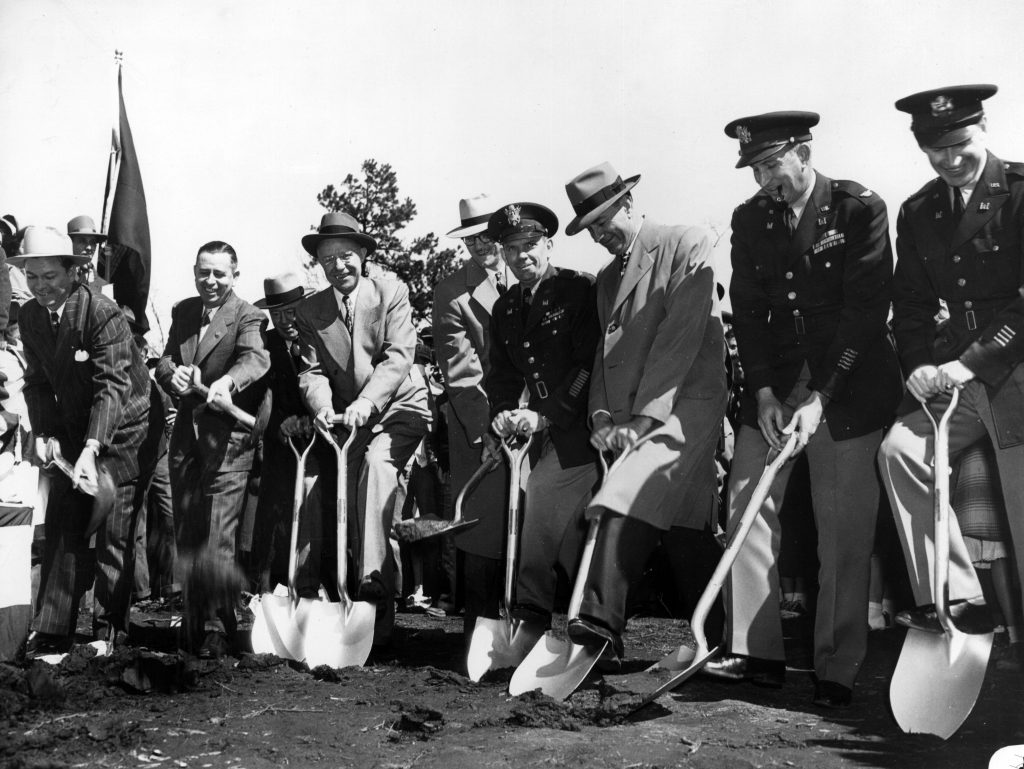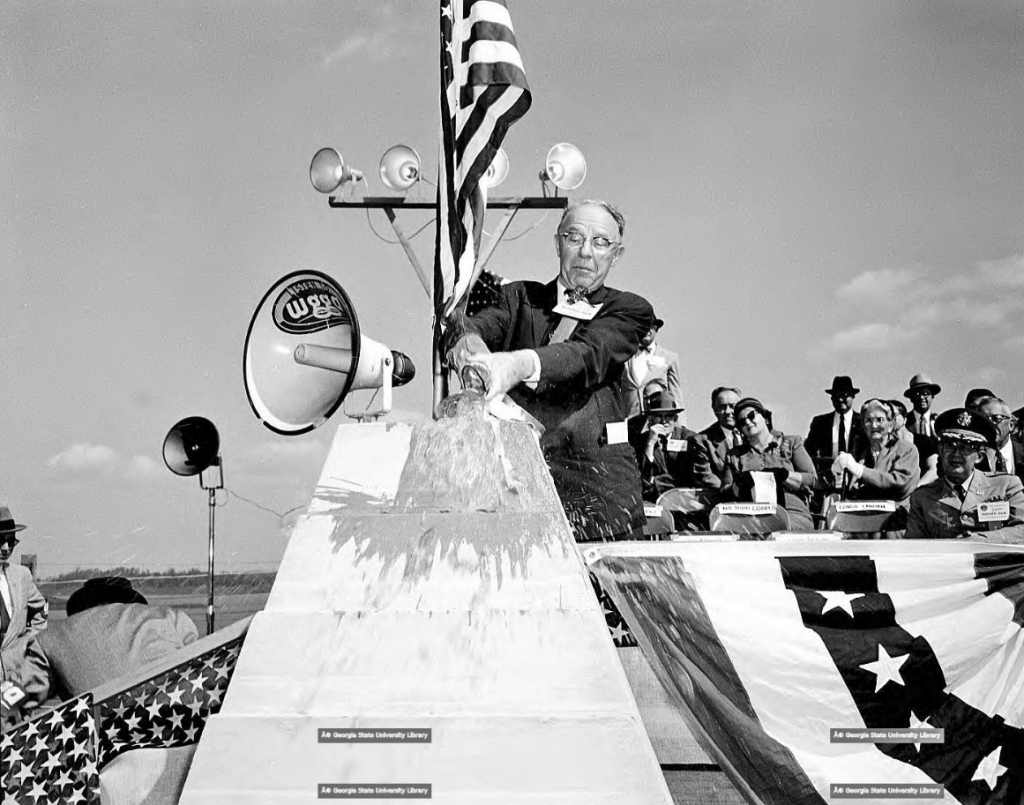Dam Construction and Lake Filling


Thousands of people gathered on March 1, 1950, for the Buford Dam groundbreaking. Construction brought an influx of new resident workers and had lasting effects on the communities as well as the landscape.
Virginia Saine: “When they started the dam, we got lots of new people and that’s when Buford really started growing. And it eventually spread to Sugar Hill, but basically they came to Buford. We had no one that wasn’t from here, if that makes sense…. We had, in Buford, there was one Jewish family, one Catholic family of the whole town, because you knew everybody then. And so it made it diverse when they came.”
George Pirkle: “My brother and my mother and daddy and I would all ride over to a lookout point that was on the east bank of the proposed lake, on the east bank of the river. And we’d sit there and watch them for hours. The reason we could get over there is because Dad had a pass to get inside the place because he sold eggs to the little lunch cafe thing that they had built up on one side of this big bank. And it looked like something out of Gold Rush days or something.”
After six long years of construction, the dam was ready to hold water. A ceremony held on February 1, 1956, marked the closing of the gates. At this point, Lake Lanier began to slowly fill.
It took years for the lake to reach capacity. During that time, the rising water drove animals from their natural habitats.
Jerry Henderson: “…it did actually run a lot of varmints out on us, the snakes and everything had to leave and look for higher ground. So they did come visit.”
The filling of Lake Lanier also caused logistical problems for locals trying to navigate an ever-changing landscape. For some, it was an emotional process as they watched familiar landmarks disappear before their eyes.
George Pirkle: “Daddy took what he remembered as being a way that he could go to get home and he turned down this road. There were no indications anywhere that there was any kind of hazard down there. But we’re driving along and I was in the back seat, and I heard mother scream and daddy slammed on brakes and I looked up. And the headlights were just right at the water. The road had gone.”
Martha McConnell: “My aunt had grown up on that property, and the house was still there. And if we were over that way, she would want to ride by and see how deep the water was getting. And each time, it was up a little higher and the last time we went by, it was up to the roof line and she never wanted to go back after that.”
Buford Dam was officially dedicated, and the project’s completion celebrated, on October 9, 1957. In June 1958, Lake Lanier opened to the public for recreation. This would usher in a brand-new era for the once-sleepy farming communities of the north Georgia foothills.